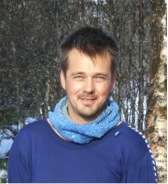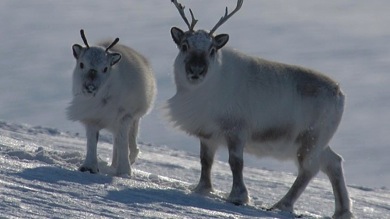Updated: 16/05/2024
We welcome Professor Leif Egil Loe, Aas, Norway to the Oikos Editorial Board. Who is Leif Egil then? I asked some questions to get to know him better:
- What’s you main research focus at the moment?
 Most of what I am working on is related to ungulate ecology. I am involved in two long-term projects. The first is a population study of Svalbard reindeer initiated by Steve Albon and Rolf Langvatn in 1994 and still running on the 20th year. Current focusof that project is to understand mechanisms of population dynamics and aspects of life history evolution. I am also very interested in spatial ecology, so a subset of our reindeer is GPS-marked. One prediction from climate change is that ground icing events will happen increasingly often in Svalbard, and it has indeed happened two of the five years we have GPS-tracked animals. I am interested in the fitness consequences of different behavioural responses to such events. The second main project is a red deer study with Prof Atle Mysterud as PI. In the past few years we have focussed on the mechanisms of migration, again using GPS-data from several hundred marked red deer. Currently we have a stronger management focus, modelling functional management units and investigating how spatial harvesting patterns are predicted to be affected by climate change.
Most of what I am working on is related to ungulate ecology. I am involved in two long-term projects. The first is a population study of Svalbard reindeer initiated by Steve Albon and Rolf Langvatn in 1994 and still running on the 20th year. Current focusof that project is to understand mechanisms of population dynamics and aspects of life history evolution. I am also very interested in spatial ecology, so a subset of our reindeer is GPS-marked. One prediction from climate change is that ground icing events will happen increasingly often in Svalbard, and it has indeed happened two of the five years we have GPS-tracked animals. I am interested in the fitness consequences of different behavioural responses to such events. The second main project is a red deer study with Prof Atle Mysterud as PI. In the past few years we have focussed on the mechanisms of migration, again using GPS-data from several hundred marked red deer. Currently we have a stronger management focus, modelling functional management units and investigating how spatial harvesting patterns are predicted to be affected by climate change.
- Can you describe your research career? Where, what, when?
I have a masters degree from the University of Oslo (UiO) and the University Centre in Svalbard (UNIS) from 1999 and a PhD from UiO in 2004. The title of the masters was “Habitat selection and site fidelity in Svalbard reindeer” (supervised by Nils Chr. Stenseth and Rolf Langvatn) and the PhD was entitled “Patterns and processes in the life history of red deer” (supervised by Atle Mysterud, Stenseth and Langvatn). From 2004 to 2010 I had researcher positions in Atle Mysteruds lab continuing to work on the red deer project. So as you see I have very much pursued the first two projects I encountered. Between 2008 and 2013 I worked with PhD student Anagaw Atickem on a Mountain nyala conservation project in Ethiopia that at least expanded my study topics geographically. In 2010 I was employed as an Associate Professor in wildlife ecology and management at the Norwegian University of Life Sciences. In 2013 I got promoted to full professor.
- How come that you became a scientist in ecology?
I think I followed a fairly common path. For as long as I remember I always liked birds, especially feeding them during winter, drawing them and learning their names. In my teens I started collecting butterflies that was a main hobby for 3-4 years. The starting point was identifying species of birds and insects. Starting at university, I got interested in ecology. A study year in Svalbard, and especially meeting Rolf Langvatn, became influential in my career and primed me in on ungulate ecology. Taking a PhD in Stenseths Centre of Ecological and Evolutionary Synthesis, with Atle Mysterud as the main supervisor was fantastic – the best career start one can wish for.
- What do you do when you’re not working?
I have two kids so a lot of time is devoted to family life. I am a keen small game hunter, like to hike and do cross country skiing in the forest and mountains. My favourite sports activity is “floor ball” that I play once a week.

